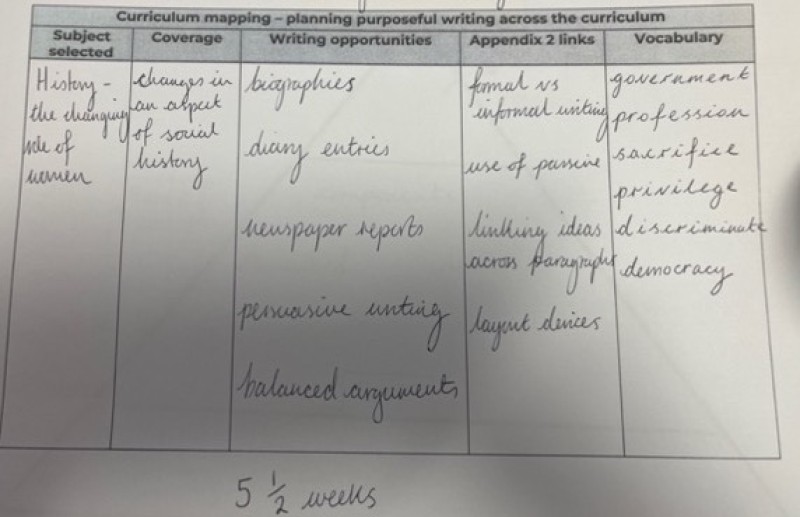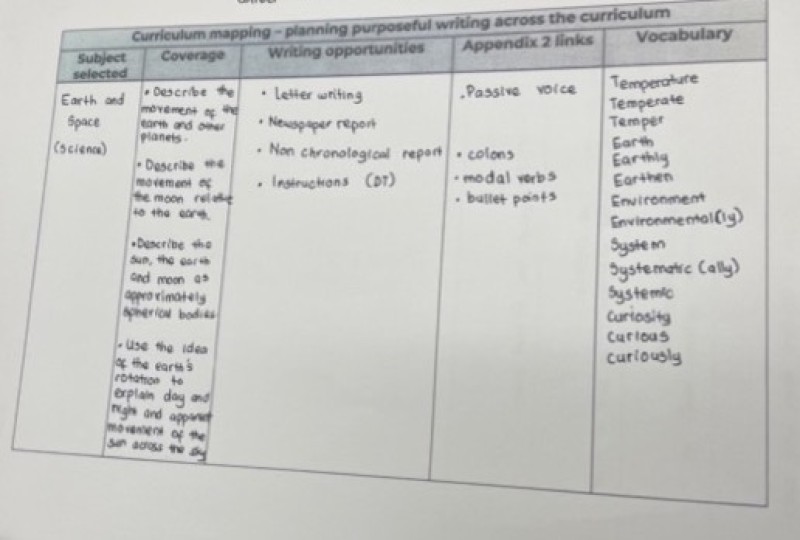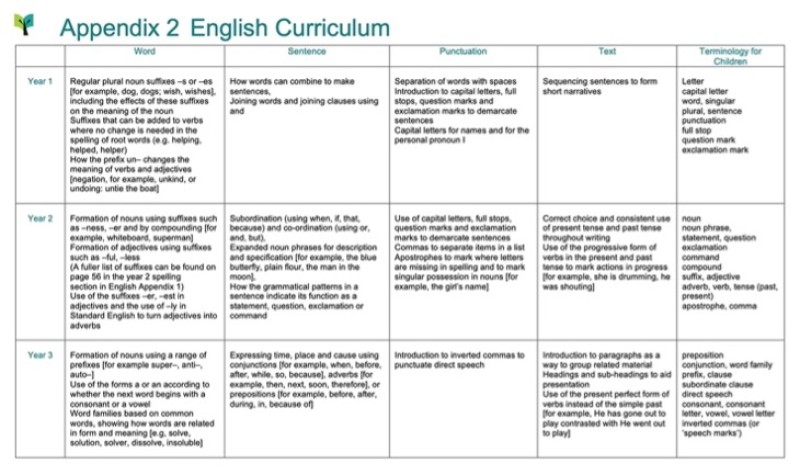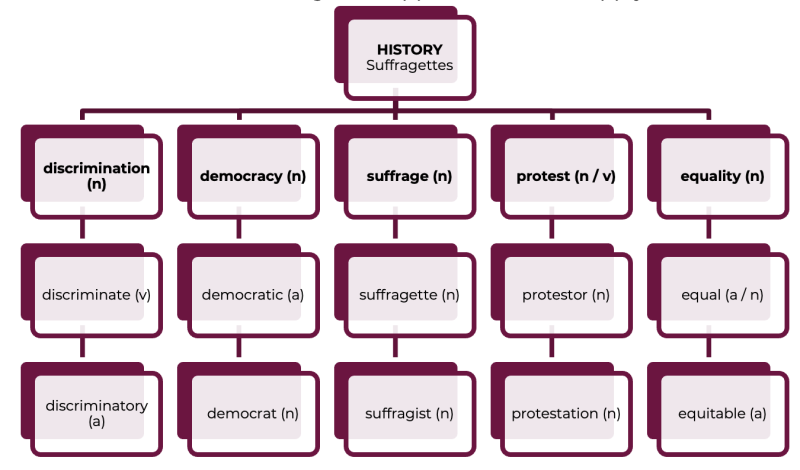Posted on: 23/11/2022
At Literacy Tree we are always weaving opportunities into our Planning Sequences to write for a range of purposes and audiences with links to multiple curriculum areas. While our text choices are organised by literary theme, within our curriculum maps, you will find rich, high-quality texts which also link to Science (such as Varmints, Can We Save the Tiger? and Here We Are), History (look at Suffragette: The Battle for Equality, Anne Frank, From Auschwitz to Ambleside and Children of the Benin Kingdom) and even Art and DT (think Iggy Peck, Architect and Rosie Revere, Engineer). In a curriculum of depth, not breadth, making links across the curriculum provides the perfect opportunity for children to practise, apply and embed those taught writing skills in context whilst also developing understanding and knowledge in foundation subject objectives. In many of the schools we have been working with this term, conversation has turned to ‘cross-curricular writing’, or as we often refer to it, ‘writing across the curriculum’ and the challenges this presents to teachers. Why does it sometimes seem that the quality of writing outside of English sessions doesn’t always match the quality within them?
It is important to remember how cognitive load theory impacts our children as writers. With a heavy focus now on knowledge in foundation subjects, the pressures on schools to ensure children know more and remember more is at the forefront of our minds when teaching these subjects. So when we then expect children to apply this new complex knowledge within the context of writing, it is not surprising that they often flounder. It is quite simply much harder to think about the skill of writing when your brain is already taking on board significant amounts of new knowledge in a particular subject area. In addition to this, the quality of writing that children produce outside of English lesson is often lower because teachers’ capacities are stretched, and planning time is focussed on the core curriculum areas. Teachers just don’t have the time to spend on meticulously planning the modelled writing needed to support pupils with their writing in History and Geography, and as such the English ‘diet’ that pupils are receiving across the curriculum is not equitable. The expectations shift, and therefore the quality of outcomes shift.
So how can we address this and improve the quality of writing across the curriculum in a way that is realistic and manageable in terms of the pressures of teacher workload and in a way which works supportively to ease the cognitive load pressures on pupils? In response to these discussions, we have put together a collection of ideas to support you to develop the quality of writing across the curriculum to redress the balance.

Quality literature is at the heart of everything we do in at Literacy Tree, so it’s not surprising that we’ve put this first on our list for developing writing across the curriculum. We spend a long time carefully selecting and brokering high-quality texts for our Planning Sequences and Literary Leaves, and as subject leads and teachers you will undoubtedly do the same – we want the texts we use to be full of quality literary language, provoke rich discussion and provide opportunities for meaningful and purposeful writing. But how long do we spend doing the same for the texts we use across the curriculum? Or is it more common for texts to be selected quickly from the non-fiction section, based simply on title and topic? We often refer to being in a golden age of non-fiction now – the choice of high-quality non-fiction available is vast. Consider your choices of text in other curriculum areas carefully. By using high-quality texts as part of our teaching across the curriculum, we raise the bar by widening children’s exposure to high-quality, rich language which they can then mirror in their own writing centred around a particular topic area or theme. What’s more, careful selection of high-quality texts in your English teaching to tie in with a particular theme or topic you may be covering in, say, History or Geography can reduce the cognitive load on pupils by allowing them the opportunity to immerse themselves in the world of the text through their English sessions.


This is such a fundamental part of the English Programme of Study, so it always seems strange that it is an appendix, which has associations of being an add-on, or easily removed. We feel it is the backbone of the English curriculum! It is the nuts and bolts of the grammar we need to teach in each year group and is the bread and butter of our Planning Sequences; ensuring these grammar objectives are embedded purposefully and appropriately within the context of the high-quality text is key. These objectives can be used for writing across the curriculum as a way of reinforcing previously taught skills and applying them to different contexts or subject areas. By using this, it allows the focus to remain on the foundation subject objectives, whilst also revising and applying the grammar skills we have taught through our English sessions. Certain grammar skills also lend themselves very naturally within writing across the curriculum (for example, the use of passive voice when writing up a science experiment). We often refer to grammar teaching by stealth; why not extend and reinforce this principle across the curriculum? By spending some time in advance considering the Appendix 2 links which naturally weave into any writing opportunities you have identified across the curriculum, you will increase your opportunities to reinforce and embed these skills.


We put a lot of focus on carefully planning out the modelling of writing when teaching through a text, ensuring the appropriate grammar and composition skills are exemplified throughout. Is the modelling of writing across the curriculum planned in or considered in the same way? Of course, we may not have the luxury of time to drill down into the detail and specifics of the grammar and composition elements of our models like we do in our English sessions. However, we can still use modelling opportunities to demonstrate the thought process behind the composition and ensure our models of any form of writing showcase the ongoing grammar and sentence level expectations we have for our children, even if this is just the occasional reference point here and there. Use the opportunity to address any common misconceptions or issues you have picked up in your children’s writing – those common errors you end up repeatedly reminding them of. Consider how you can refer to word list words and taught spelling rules through the model and use modelling of writing across the curriculum as an AFL opportunity. Every time you model writing, use it as a chance to reinforce both previously taught and current focus skills, and embed them within different contexts.
Think carefully about the writing opportunities you offer across the curriculum. Are they reinforcing the focus on audience and purpose? Who are we writing for and for what reason? As adults, we only ever write when we have real reason to, so this should be no different for our children for every piece of writing they undertake. For every writing opportunity your children are given, regardless of the curriculum area it may sit within, remind them of who and why they are writing; think about the rich range of purpose and audience you have in your English lessons and mirror this in other subjects. Take a break from teaching non-chronological reports and biographies and instead consider how obituaries, biographies, brochures, documentary transcripts, Wikipedia entries and letters can heighten the sense of audience and purpose. We know children thrive on consistency and routine – if the focus is on audience and purpose whenever we write, they see that the expectations and focus are the same for writing, no matter the curriculum area. Writing is writing, no matter the topic. Heightening the sense of audience and purpose will improve both levels of engagement and the quality of writing your children produce.
Knowledge Organisers for foundation subjects have become really popular as a useful way of setting out the knowledge children will be taught through a unit of work – often including a section on vocabulary and these can work brilliantly when the vocabulary is carefully and progressively selected. Try to include a range of Tier 2 as well as Tier 3 vocabulary so that children really get to grips with the language and learn how to embed and apply it in meaningful ways. Consider how you can cut these lists down to a manageable number of key Tier 3 words, and teach them alongside some Tier 2 language which can be applicable across multiple contexts. Try explicitly teaching the words and reinforcing them so that it makes it past just their short-term memory banks! Refer to Appendix 1 word list words - you’ll be surprised at how many of these (particularly the KS2 lists) link naturally to certain foundation subject areas. A word-web style vocabulary planner can be a helpful tool for this. When teaching vocabulary across the curriculum, be selective over your choices and teach the word families which come alongside them to develop and extend the application of this language. By exploring the word families around more precise, selective vocabulary lists it can often turn subject-specific Tier 3 language into more applicable, useful Tier 2 opportunities. Consider how you will teach this language and specific ways in which you will reinforce understanding and support children to apply it in context.

The subject of English is unique within the curriculum in that it is a universal subject – by this, we mean it is the only subject which is taught in some form across every aspect of the curriculum. Where does the English curriculum end? The reality is, it doesn’t. It permeates through every aspect of the school day, be it through the instructions we give, the discussions we have or the outcomes our children are expected to deliver. So it makes sense to embed the key taught elements of the English curriculum across the wider curriculum offer and make them work alongside each other. Of course, we would say this, but by seeing English as the backbone of all curriculum teaching it can shift your perspective on the pressures of addressing all the reading and writing needs of pupils within those reading and writing sessions, and seeing the opportunities that writing across the curriculum can offer to reinforce and embed those skills. At times, this may mean thinking flexibly about timetabling. If you know a written outcome is needed for your Geography lesson on a Friday afternoon at 2pm, consider whether this is the best place for this to happen successfully. Can you be flexible in your timetabling to build this into your English sessions and combine the two more effectively?
We hope these suggestions will support you in developing writing across the curriculum and help you to improve the quality of outcomes in writing in different curriculum areas. Remember, cross-curricular writing is just writing, and the more we can do to reinforce the skills for grammar and composition and push the focus on purpose and audience every time we write, the more secure our children will become in writing and the deeper their whole curriculum experience will become.
Posted in: Curriculum | Home Learning
KS: Lower KS2
Year Group: Year 4